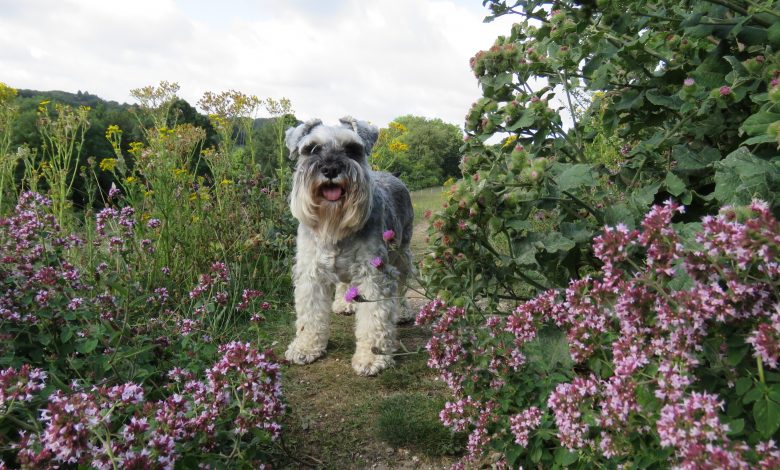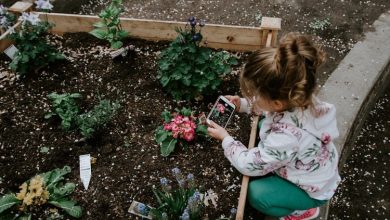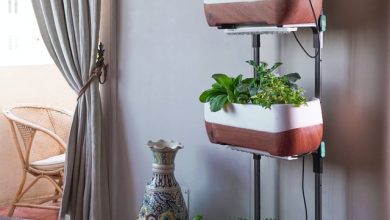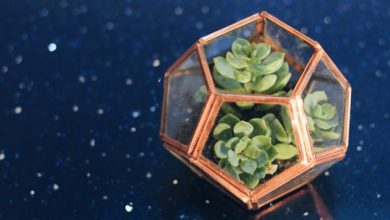How to Design a Pet Proof Garden

According to the 2019 national pet owners survey conducted by the APPA, around 67 percent of American households have a pet. If your household is in a position that you can own and care for a pet, you may be worried about protecting your garden.We are going to run through some cat and dog friendly plants and how to grow them. We are also going to discuss some good gardening tips and practices to keep your little guys out of harm’s way.
Dogs
The behaviors of man’s best friends differ from that of its feline counterpart, so there are different processes and precautions you are going to need to take. One of the biggest differences is the fact that, if you let a cat out, chances are that it is going to wander off by itself, hopping over your wall or fence and going on its merry way. Your dog, on the other hand, does not possess the athletic ability for such feats, which means that your dog is going to be spending a lot more time in your garden than your cat would be. So you’re going to need to make sure your garden is secure.
You need to take care of both your plants and your pet here. Of course, your dog is more important, and if your garden has to take a hit to ensure its safety, then that should be no problem.
Designated Dog Play Area
The best thing you can do for this effort is to build a designated play area for your dog. Dogs like digging and foraging, especially if you have a hunting breed like a Jack Russell. To stop them from destroying your flowers, you are going to have to do a bit of training and provide them with an area for them to play.
Section off a part of the garden, ideally in a corner or along a wall. Fence it off with a gate, or if you don’t like that idea, with a raised bed. In here, you can section off yet another, smaller patch to fill with sand or dirt and plant some goodies in. Refill it periodically, and you have a hole of endless entertainment for your pup. For the rest of the area, you can have a series of different materials on the ground – maybe alternate between grass and stone. Doing this provides your dog with ample stimulation on their tiny, sensitive paws.
Not only does this give your dog an area outside that belongs to them, but it also can serve as an area for an outdoor dog kennel.
Just be sure not to put it in a spot that is directly in the sun. Granted, a lot of dogs love sunbathing, and a bit is alright, but make sure that they have plenty of water and the option of the shade should they want it.
Paths
This may not be an option for you, though, and you need a way to make your garden dog friendly without a dedicated playpen for them. Well, the same principles apply here, but the method differs.
You need to keep your dog entertained and stimulated. The best way to do this naturally is to create a series of clearly defined paths in your garden for them to race around. If you have tall plants growing along the sides of these paths or overhead, that’s even better.
Again, mixing up the ground is stimulating underfoot for your pup’s paws, so perhaps run a trail down a stone path, then in through some bushes over grass and soil, and out the other side back onto the path.
Incorporating tall plants into this design has benefits in two ways. First is the effect it has on your dog as they weave and worm their way through the trail you’ve created for them. Second is that these plants can sway and dance with the wind, which some pups find fascinating.
The keyword for everything here, though, is training. Without it, your pups just go nuts and do whatever their heart desires, so make sure to invest in some tutorage before letting them loose unsupervised.
Keeping Them Out of the Garden
One issue you may face is that your dog doesn’t let you plant new seedlings, trampling the flowers before each has even begun to bloom. If that’s the case, you’re going to have to either keep your dog away from these new plants or plant flowers that are already grown.
If you’re going with the latter, your best option is to go with robust flowers with plenty of foliage and shrubbery. Doing this creates a barrier that most dogs recognize shouldn’t, or cannot, be crossed. It isn’t going to stop particularly boisterous pups, but there is no harm in trying.
If you’ve got a particularly small set of paws running around the lawn, you could use raised flower beds or raised borders to stop them from getting into your flower patches.

Gate
If you live in a more urban area with lots of roads and heavy traffic, a gate should be at the very top of your priority list. You don’t want your pup ending up lost, or worse.
A simple gate isn’t going to cut it, though. If you have a hunter or a particularly adventurous dog, they are going to dig under it and literally tunnel their way to freedom. So you need to make sure the base of your borders are secure and that your pup can’t dig under and out.
Despite some of their sizes, dogs are unusually nimble when it comes to squeezing themselves through tight gaps – not as much as cats, but it is still something you need to keep in mind.
Keep your fence patched up, repair any holes immediately, and perhaps consider attaching a small board to the bottom of the fence, running along its length. Doing this stops your pet from trying to squeeze their way through it.
Lastly, when it comes to stopping them running off, you need to remember that dogs can jump surprisingly high, especially medium-sized builds that have good muscles, so when you’re erecting it, make sure your fence and walls are at least six feet high, better safe than sorry. And always remember to keep the gate latched.
Preventing Slugs and Snails
Flowers and plants attract all sorts of wondrous and magnificent creatures. From worms and ladybugs, to butterflies and bees, some well-placed flowers can transform your garden into a miniature world buzzing with wildlife. Plenty of these guys are fine, even welcome, but there is some tourists who you definitely don’t want anywhere near your precious pup: slugs and snails.
These slimy little pests are not only a threat to your cabbage and lettuces, but your dogs as well. Canines can contract lungworm from them, and for some reason, a few dogs tend to see them as a tasty, juicy treat, so you need to stop them from getting in your garden, to begin with.
The issue with this is that you can’t use any chemical-based slug repellents, as those solutions contain chemicals that are also harmful to dogs. That means that your only real option is to plant some flowers and herbs that naturally repel slugs and snails by itself.
There are a handful of options you have to choose from, the most popular being basil, garlic, lavender, and parsley. So take the precaution of planting a few of these in various spots around the garden. Of course, there is no guarantee that doing this is going to completely stop any snails and slugs from infesting your garden, so do regular spot checks just to be on the safe side.
If you do think your pup may have ingested a slug and caught lungworm, the common signs to look out for are coughing and wheezing, struggling to breathe normally, and a lack of energy.
Storing Tools Properly
It’s not just foreign wildlife you need to be on the lookout for, though. In fact, often, the biggest threat to our pets is our own forgetfulness. In this case, forgetfulness when it comes to tools.
When you’re gardening, you are using all sorts of spikey and sharp apparatuses, some of which can end up seriously injuring your pooch. Things like shovels and rakes fit the bill here and are a common sight in every well-made garden, so you need to have a secure place to store them.
The obvious solution would be a shed. It looks nice, provides you with lots of space and utility, and most importantly, can be shut and locked. Chances are you already have one, but if not, consider building one.
Lock it from the outside, and keep all of your tools inside it stored up off the floor. Not only does it keep your pets safe, but it keeps your tools and chemicals safe from potential thieves.
Avoid Chemicals
It should come as no shock that garden chemicals are full of substances that can absolutely destroy the insides of any animal, dog, or otherwise. Things like insect repellents, certain growth mixture, and water additives are important to avoid, so you’re going to have to find a workaround if you need to use a chemical compound of some sort. It shouldn’t be too much of a problem, though, as there are so many natural solutions to synthetic creations these days.

Avoid Harmful Plants
Lastly, you need to be very careful with your plant choice. There are plenty of flowers that are safe for dogs, but there are equally as many that are toxic to them. Plants like buttercups and daffodils can be potentially harmful to your pet if they consume them, so avoid them. On the other hand, snapdragons and roses look great and are perfectly fine. Just make sure that you do your research before you plant anything.
Another item to avoid is cocoa bean shell mulch mix. It’s a very niche item admittedly, but being aware of it could save you a lot of trouble and your pet a lot of pain.
Other than that, just use your common sense. You’re a dog owner, and if you’re reading this article, you’re a good one. So just trust what you already know, follow the advice here, and you should be all good to go.
Common Harmful Plants for Dogs
- Aconitum
- Azalea
- Ivy
- Amaryllis bulbs
- Cyclamen
- Asparagus fern
- Daffodil bulbs
- Daylilies
- Delphiniums
- Hemlock
- Hyacinth
- Foxgloves
- Hydrangea
- Lily of the valet
- Lupins
- Nightshade
- Laburnum
- Morning glories
- Oleander
- Rhododendron
- Yew
- Wisteria
- Tulip bulbs
- Sweet pea
- Rhubarb leaves
There are more, of course, but these are the most common.
Common Safe Plants for Dogs
- Snapdragons
- Roses
- Honeysuckle
- Camellias
- Cornflower
- Michaelmas daisies
- Lavender
- Sunflowers
- Centaurea
- Elaeagnus
- Calendula
- Impatiens

Cats
Cats are more independent, which means your approach to proofing your garden is going to differ. Granted, a lot of the same principles apply. You should be storing your tools away and out of their reach, although here, you need to remember that cats can get literally anywhere, so make sure your shed is locked up tight.
You still want to be avoiding chemicals. Generally speaking, most of the chemicals that are toxic for dogs are still toxic for cats, but there may be some difference, so make sure you use caution.
You can still create trails for your cats like you would your dog. They need exercise, after all. Although, the types of trails that you create are going to differ quite drastically. Cats are significantly nimbler and more athletic than dogs and have a much larger ability to move vertically, so incorporate that into your designs. Cats also enjoy having their own enclosed space as dogs do, so you can still work away, creating a nice boxed off area for them to chill in.
You still want to be on the lookout for pests, and repelling them. Cats aren’t as likely to go munching on some slugs, but it can’t hurt to keep them away regardless.
Of course, lastly, you still want to be making sure that the plants you are throwing in the ground are safe for your plants to be around.
Now, there is one crucial detail upon which cats and dogs differ in this regard, and that is the aforementioned ability to scale things vertically. Cats can get over things that dogs cannot – most notably, in this case, fences and walls.
This means you’re going to need to get cat barriers and or cat fences. Cat barriers come in the form of netting that you can set up that blocks off an area as you need it. You can use it here and there to block off specific access points from your cats, but it also means you are going to struggle to get through it, as well.
On the other side, you have cat fences. These are high fences designed with netting that arches out over the top, essentially stopping your cat from being able to hop over them. It’s a great product, but it’s going to run you time and money.
The other option, and the most usual one, is just to let your cat roam free and come and go as they please. Cats are great survivors and very street smart, so it’s unlikely that any harm is going to come to them while they’re out on their adventures. Your main risk is that they simply decide to completely head off and not come back. It’s unlikely, but it can happen. If that’s a risk you’re willing to take, though, then just make sure your garden is safe, and let them do their thing.



